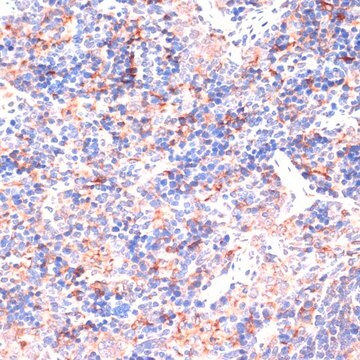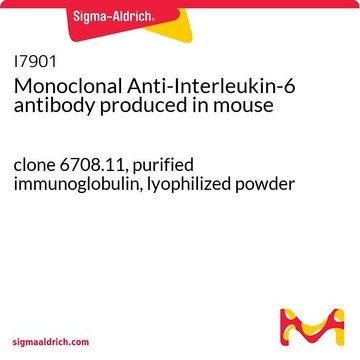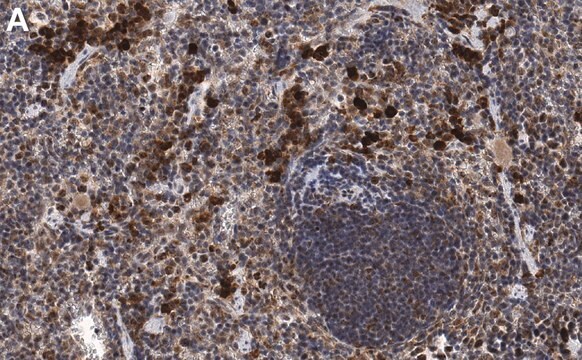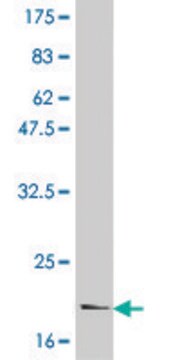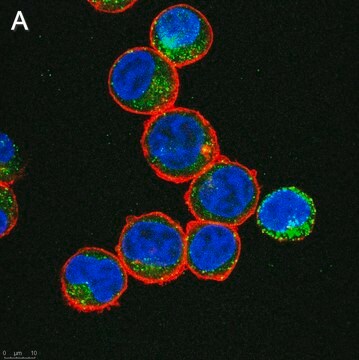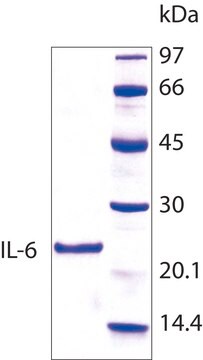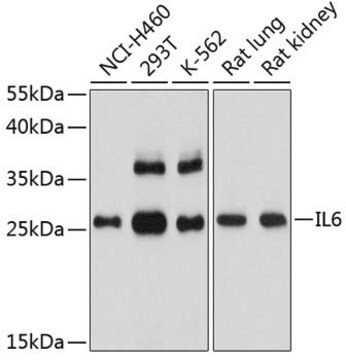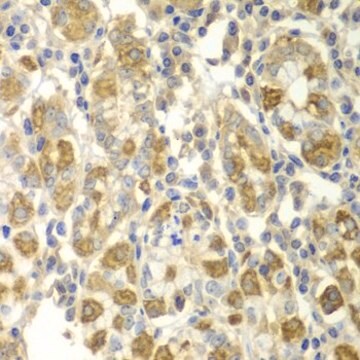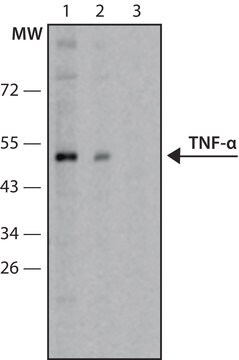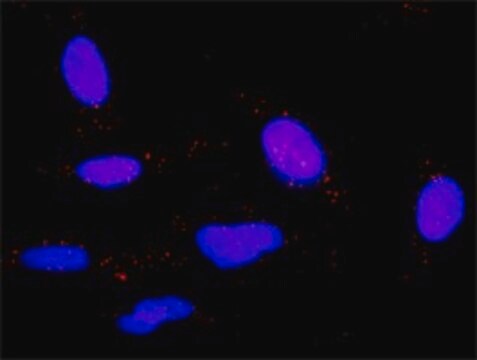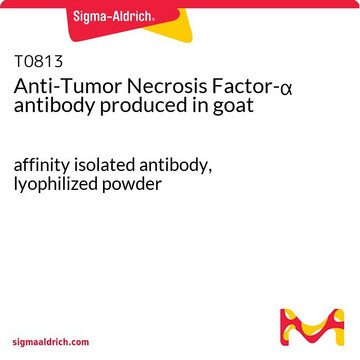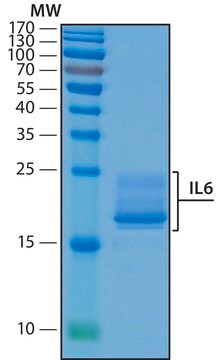I2143
Anti-Interleukin-6 antibody produced in rabbit
IgG fraction of antiserum, buffered aqueous solution
Sinonimo/i:
Anti-IL-6
Autenticatiper visualizzare i prezzi riservati alla tua organizzazione & contrattuali
About This Item
Prodotti consigliati
Origine biologica
rabbit
Livello qualitativo
Coniugato
unconjugated
Forma dell’anticorpo
IgG fraction of antiserum
Tipo di anticorpo
primary antibodies
Clone
polyclonal
Stato
buffered aqueous solution
Reattività contro le specie
human
tecniche
neutralization: suitable using human IL-6 in a T1165 cell proliferation bioassay
radioimmunoassay: suitable
N° accesso UniProt
Condizioni di spedizione
dry ice
Temperatura di conservazione
−20°C
modifica post-traduzionali bersaglio
unmodified
Informazioni sul gene
human ... IL6(3569)
Categorie correlate
Descrizione generale
Anti-Interleukin 6 (IL-6) is produced in rabbit using purified human recombinant IL-6 produced in E. coli as the immunogen. Interleukin-6 is a multifunctional protein originally discovered in the media of cells stimulated with double stranded RNA. Interleukin-6 (IL-6) is a cytokine produced by activated T cells, endothelial cells, fibroblasts and activated monocytes or macrophages.
Specificità
The antibody will neutralize the biological activity of human IL-6 in cell culture. The antibody does not cross-react with human IL-1β, TNF-α or mouse IL-6.
Immunogeno
Purified human recombinant IL-6 produced in E. coli.
Applicazioni
Anti-Interleukin-6 antibody can be used in western blotting and ELISA for studying human IL-6. It can also be used for dot blot immunoassay. Anti-Interleukin-6 antibody can be used for selective neutralization of human IL-6 bioactivity in cell culture. It can also be used in radioimmunoassay (RIA) (diluted 1:60,000).
It may also be used in immunoblotting.
Azioni biochim/fisiol
Interleukin 6 (IL-6) acts upon a variety of cells, including fibroblasts, myeloid progenitor cells, T cells, B cells, and hepatocytes. Interleukin 6 (IL-6) also potentiates the proliferative effect of Interleukin 3 (IL-3) on multipotential hematopoietic progenitors.
Interleukin-6 (IL-6) is a cytokine produced by activated T cells, endothelial cells, fibroblasts and activated monocytes or macrophages. It plays a crucial role in regulating the acute phase response as well as responses occurs after injury and infection. It interacts with IL-2 and facilitates in the proliferation of T lymphocytes.
Stato fisico
Solution, 0.2 μm filtered, in 0.5 mL phosphate buffered saline, pH 7.4.
Esclusione di responsabilità
Unless otherwise stated in our catalog or other company documentation accompanying the product(s), our products are intended for research use only and are not to be used for any other purpose, which includes but is not limited to, unauthorized commercial uses, in vitro diagnostic uses, ex vivo or in vivo therapeutic uses or any type of consumption or application to humans or animals.
Non trovi il prodotto giusto?
Prova il nostro Motore di ricerca dei prodotti.
Codice della classe di stoccaggio
10 - Combustible liquids
Classe di pericolosità dell'acqua (WGK)
WGK 3
Punto d’infiammabilità (°F)
Not applicable
Punto d’infiammabilità (°C)
Not applicable
Scegli una delle versioni più recenti:
Possiedi già questo prodotto?
I documenti relativi ai prodotti acquistati recentemente sono disponibili nell’Archivio dei documenti.
I clienti hanno visto anche
A crosstalk between myeloma cells and marrow stromal cells stimulates production of DKK1 and interleukin-6: A potential role in the development of lytic bone disease and tumor progression in multiple myeloma
Gunn W G, et al.
Stem Cells, 24(4), 986-991 (2006)
Vuong Cat Khanh et al.
Stem cells and development, 29(21), 1382-1394 (2020-09-10)
Cancer metastasis is the leading cause of mortality among breast cancer patients. Type 2 diabetes mellitus (T2DM) has been suggested as a risk factor of breast cancer; however, whether or not T2DM is associated with breast tumor metastasis remains unclear.
Inflammation, obesity, stress and coronary heart disease: is interleukin-6 the link?
Yudkin J S, et al.
Atherosclerosis, 148(2), 209-214 (2000)
Debra J Romberger et al.
American journal of physiology. Lung cellular and molecular physiology, 311(1), L101-L110 (2016-05-18)
Agricultural dust exposure results in significant lung inflammation, and individuals working in concentrated animal feeding operations (CAFOs) are at risk for chronic airway inflammatory diseases. Exposure of bronchial epithelial cells to aqueous extracts of hog CAFO dusts (HDE) leads to
Interleukin-6 and chronic inflammation
Gabay C, et al.
Arthritis Research & Therapy, 8(2), S3-S3 (2006)
Il team dei nostri ricercatori vanta grande esperienza in tutte le aree della ricerca quali Life Science, scienza dei materiali, sintesi chimica, cromatografia, discipline analitiche, ecc..
Contatta l'Assistenza Tecnica.